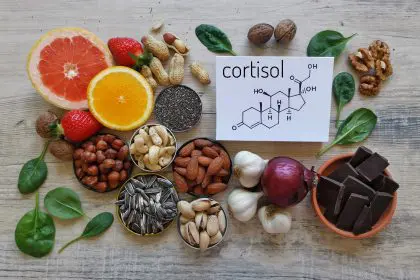Discover how specific anti-inflammatory foods can help manage joint pain and potentially reduce your need for pain medication. These accessible kitchen ingredients might be the missing piece in your joint health puzzle.
The food-inflammation connection
Joint pain affects millions of Americans, from those with diagnosed conditions like rheumatoid arthritis and osteoarthritis to individuals experiencing temporary discomfort from overuse or injury. While medication often provides necessary relief, growing research indicates that dietary choices can significantly influence inflammation levels and joint comfort.
The connection between food and joint pain centers primarily on inflammation—the body’s natural response to injury or infection. In healthy individuals, inflammation is a beneficial, temporary process that promotes healing. However, certain conditions and dietary patterns can trigger chronic inflammation, which damages tissues and intensifies pain, particularly in joint structures.
What we eat directly influences the body’s inflammatory processes. Some foods contain compounds that activate pro-inflammatory pathways, while others provide substances that actively suppress inflammation. This relationship offers a powerful opportunity to manage joint discomfort through strategic dietary choices rather than relying solely on medication.
Recent research from institutions including Harvard Medical School, the Arthritis Foundation, and the Cleveland Clinic has identified specific foods with particularly strong evidence for reducing joint-related inflammation. These foods contain active compounds that work through multiple mechanisms to ease pain, from blocking inflammatory enzymes to reducing oxidative stress that damages joint tissues.
The six foods detailed below represent the strongest evidence-based options for natural joint pain management through diet. While individual responses vary, incorporating these foods regularly has demonstrated meaningful benefits for many people struggling with joint discomfort.
1. Fatty fish reduces inflammatory proteins
The first and perhaps most thoroughly researched food for joint pain management is fatty fish, including salmon, mackerel, sardines, and trout. These fish varieties provide high concentrations of omega-3 fatty acids—specifically EPA and DHA—which directly counter the inflammatory processes involved in joint pain.
Research published in the Annals of Rheumatic Diseases demonstrated that regular consumption of fatty fish led to significant reductions in joint tenderness and morning stiffness in patients with rheumatoid arthritis. The omega-3 fatty acids in these fish work by inhibiting inflammatory cytokines and reducing the production of inflammatory eicosanoids, molecules that promote joint swelling and pain.
What makes fatty fish particularly valuable is its comprehensive approach to inflammation. Beyond omega-3s, these fish provide vitamin D, which plays a crucial role in bone health and immune regulation, both important factors in joint pain management. Studies show that people with lower vitamin D levels typically experience more severe joint symptoms.
For maximum benefit, nutrition experts recommend consuming fatty fish at least twice weekly. For those who don’t enjoy fish, high-quality fish oil supplements can provide similar benefits, though research suggests whole food sources typically offer superior absorption and additional beneficial compounds not captured in supplements.
Preparation matters significantly when it comes to preserving the anti-inflammatory properties of fish. Baking, poaching, or grilling with minimal added oils maximizes benefits, while deep frying can actually counteract the anti-inflammatory effects by introducing pro-inflammatory compounds from heated oils.
2. Berries deliver potent antioxidant protection
The second food category with substantial evidence for joint pain reduction is berries—particularly strawberries, blueberries, raspberries, and blackberries. These fruits contain high levels of anthocyanins, powerful antioxidant compounds responsible for their vibrant colors and remarkable anti-inflammatory effects.
Research from Oklahoma State University found that participants consuming berries daily experienced a 25% reduction in inflammatory markers associated with arthritis. These anthocyanins work by neutralizing free radicals—unstable molecules that damage joint tissues and accelerate cartilage degradation—while simultaneously blocking inflammatory enzymes like COX-2, the same enzyme targeted by many anti-inflammatory medications.
What distinguishes berries from other fruits is their exceptional oxygen radical absorbance capacity (ORAC), a measure of antioxidant potency. Blueberries, for example, have one of the highest ORAC values of any common food, making them particularly effective at combating oxidative stress in joint tissues.
Beyond anthocyanins, berries provide additional compounds like quercetin and ellagic acid, which have demonstrated independent anti-inflammatory benefits. These compounds work synergistically to provide more comprehensive protection than any single constituent alone could offer.
For joint health benefits, nutrition researchers recommend consuming at least one-half cup of mixed berries daily. Fresh berries provide optimal nutrition, but frozen varieties retain most of their anti-inflammatory properties and offer a convenient, often more affordable alternative when certain berries are out of season.
3. Turmeric contains curcumin for enzyme inhibition
The third food with exceptional evidence for joint pain reduction is turmeric, a bright yellow spice common in Indian and Southeast Asian cuisine. Turmeric’s active component, curcumin, has been extensively studied for its powerful anti-inflammatory properties that rival those of some pharmaceutical interventions.
A landmark study published in the Journal of Alternative and Complementary Medicine found that curcumin reduced joint pain and improved function in patients with knee osteoarthritis comparably to ibuprofen, but with fewer gastrointestinal side effects. Curcumin works by inhibiting multiple inflammatory enzymes and pathways, including COX-2, LOX, and NF-kB—essentially interrupting inflammation at multiple points in the process.
What makes turmeric particularly valuable for joint health is its dual action as both an anti-inflammatory and an antioxidant. This combination not only reduces active inflammation but also helps prevent future inflammatory damage by neutralizing free radicals that would otherwise harm joint tissues.
The challenge with turmeric lies in curcumin’s relatively poor bioavailability—the body doesn’t easily absorb it when consumed alone. However, combining turmeric with black pepper enhances curcumin absorption by up to 2,000% thanks to piperine, a compound in black pepper. Additionally, consuming turmeric with healthy fats further improves absorption since curcumin is fat-soluble.
For therapeutic benefits, nutrition experts recommend consuming 1/2 to 1 teaspoon of turmeric daily, ideally combined with a pinch of black pepper and some healthy fat such as olive oil or avocado. Popular methods include adding it to smoothies, sprinkling it on roasted vegetables, or preparing golden milk—a traditional beverage made with turmeric and warm plant-based milk.
4. Extra virgin olive oil provides oleocanthal
The fourth evidence-based food for joint pain management is extra virgin olive oil (EVOO), particularly varieties with high phenolic content. EVOO contains a compound called oleocanthal that has a similar mechanism of action to non-steroidal anti-inflammatory drugs (NSAIDs) like ibuprofen.
Research from the University of Pennsylvania and the Monell Chemical Senses Center found that oleocanthal inhibits the same cyclooxygenase enzymes as ibuprofen, though through a slightly different mechanism. Regular consumption of high-quality EVOO has been associated with reduced inflammatory markers and improved joint function in studies of both rheumatoid arthritis and osteoarthritis.
What distinguishes EVOO from other oils is its remarkable stability and comprehensive anti-inflammatory profile. Beyond oleocanthal, it provides oleic acid—a monounsaturated fat with independent anti-inflammatory properties—and additional antioxidants that protect against oxidative damage to joint tissues.
Quality and freshness significantly impact EVOO’s therapeutic potential. True extra virgin olive oil from the first cold pressing contains substantially higher levels of beneficial compounds than refined or “light” olive oils, which undergo processes that degrade these active components.
For joint health benefits, nutrition experts recommend consuming 2-3 tablespoons of high-quality EVOO daily. The oil delivers maximum anti-inflammatory benefits when used unheated as a finishing oil or in cold applications like salad dressings. When cooking is necessary, keeping temperatures low (below 350°F) helps preserve its beneficial compounds.
5. Walnuts deliver perfect omega balance
The fifth food category with substantial evidence for joint pain reduction is walnuts. These nuts provide an optimal balance of omega-3 to omega-6 fatty acids, along with alpha-linolenic acid (ALA), a plant-based precursor to the same omega-3 fatty acids found in fish.
Research published in the American Journal of Clinical Nutrition demonstrated that regular walnut consumption reduced multiple inflammatory markers, including C-reactive protein and interleukin-6, both directly associated with joint pain intensity. The unique fatty acid profile of walnuts helps restore balance to the body’s inflammatory responses, particularly important given that typical Western diets contain excessive omega-6 fatty acids, which can promote inflammation when not balanced with sufficient omega-3s.
What makes walnuts stand out among nuts is their exceptional nutrient density. Beyond healthy fats, they provide gamma-tocopherol (a form of vitamin E with strong anti-inflammatory properties), polyphenols, and phytosterols—plant compounds that further contribute to their inflammation-fighting effects.
The bioavailability of walnuts’ beneficial compounds increases significantly when the nuts are properly chewed or ground, which breaks down cell walls and releases more active components. Some research suggests that soaking walnuts overnight may further enhance nutrient availability by reducing phytic acid, which can otherwise bind to minerals.
For joint health benefits, nutrition experts recommend consuming a small handful (about 1 ounce or 7-9 walnuts) daily. Incorporating them into morning oatmeal, adding them to salads, or using them as a nutrient-dense snack provides consistent exposure to their beneficial compounds without excessive calorie intake.
6. Ginger delivers multiple anti-inflammatory compounds
The sixth food with strong evidence for joint pain reduction is ginger, a flavorful root with a long history of medicinal use across cultures. Ginger contains over 400 active compounds, including gingerols, shogaols, and paradols, which collectively deliver powerful anti-inflammatory and analgesic effects.
Research from the University of Miami found that concentrated ginger extract reduced knee pain in patients with osteoarthritis by 40% compared to placebo. These active compounds work through multiple mechanisms, inhibiting inflammatory cytokines, reducing the activity of pain receptors, and blocking inflammatory enzymes in ways similar to COX-2 inhibitors but without the accompanying side effects.
What distinguishes ginger from many other anti-inflammatory foods is its direct analgesic (pain-relieving) effect. Beyond reducing inflammation, ginger compounds interact with vanilloid receptors on sensory nerve endings, helping to diminish pain perception—essentially providing a two-pronged approach to joint comfort.
The potency of ginger’s active compounds varies depending on form and preparation. Fresh ginger contains higher levels of gingerols, while dried or heated ginger provides more shogaols, which some research suggests may have even stronger anti-inflammatory effects. This diversity means that various ginger preparations—from fresh in cooking to dried in teas—offer somewhat different but complementary benefits.
For joint health benefits, nutrition experts recommend consuming approximately 1 teaspoon of freshly grated ginger daily or ¼ teaspoon of ground ginger. Popular methods include brewing it as tea, adding it to smoothies, incorporating it into stir-fries, or using it as a flavor enhancer in soups and stews.
Creating an anti-inflammatory eating pattern
While incorporating these specific foods can significantly impact joint pain, their effectiveness increases substantially when part of a broader anti-inflammatory eating pattern. Research consistently shows that dietary patterns matter more than individual foods, as different beneficial compounds work synergistically when consumed together.
The Mediterranean diet provides an evidence-based framework for combining these and other anti-inflammatory foods. This eating pattern emphasizes:
Abundant plant foods: Vegetables, fruits, legumes, and whole grains provide fiber and phytonutrients that reduce systemic inflammation.
Moderate fish and seafood: Regular consumption of omega-3-rich fish supports joint health.
Limited red meat: Excessive red meat consumption correlates with increased inflammatory markers.
Healthy fats: Olive oil as the primary fat source, with nuts and seeds providing additional beneficial fats.
Herbs and spices: Liberal use of anti-inflammatory herbs and spices enhances flavor while providing therapeutic compounds.
Studies examining Mediterranean diet adherence consistently find lower levels of inflammatory markers and reduced joint pain among those following this pattern most closely. The cumulative effect of consistently choosing anti-inflammatory foods while minimizing pro-inflammatory ones creates an internal environment conducive to joint comfort and function.
For those experiencing joint pain, gradually transitioning toward this dietary pattern while incorporating the six spotlight foods represents a practical, evidence-based approach to natural pain management that complements other treatment modalities.











